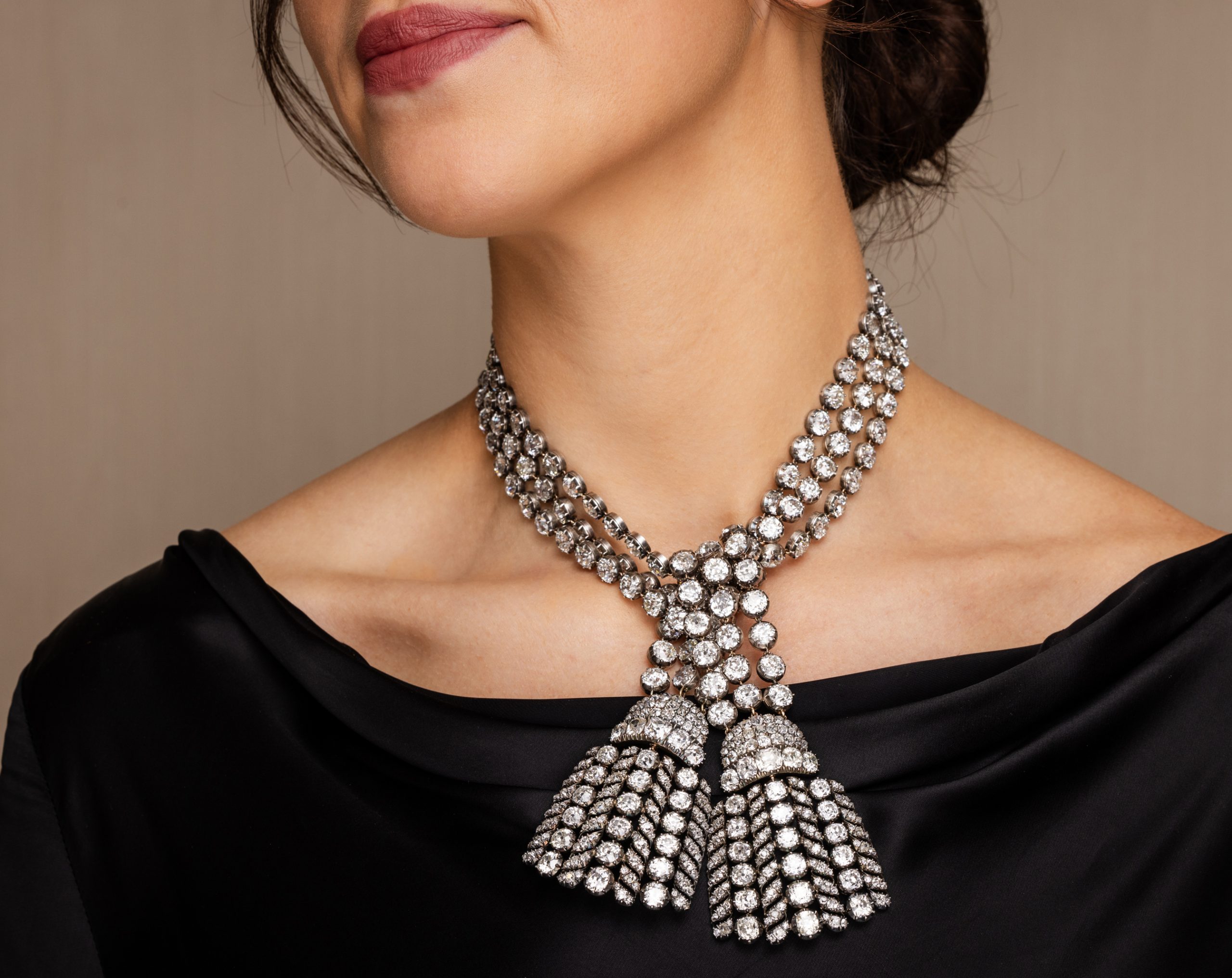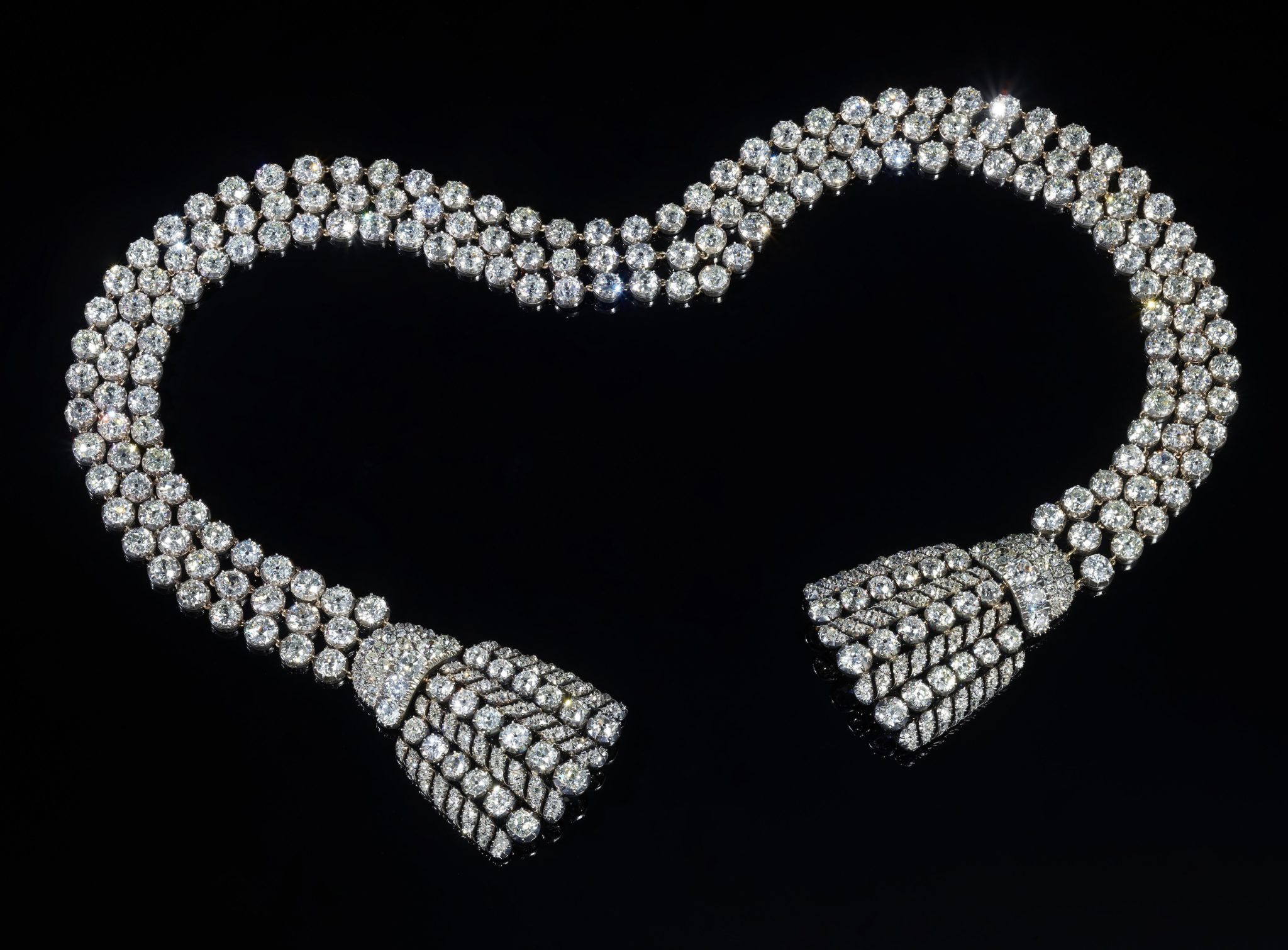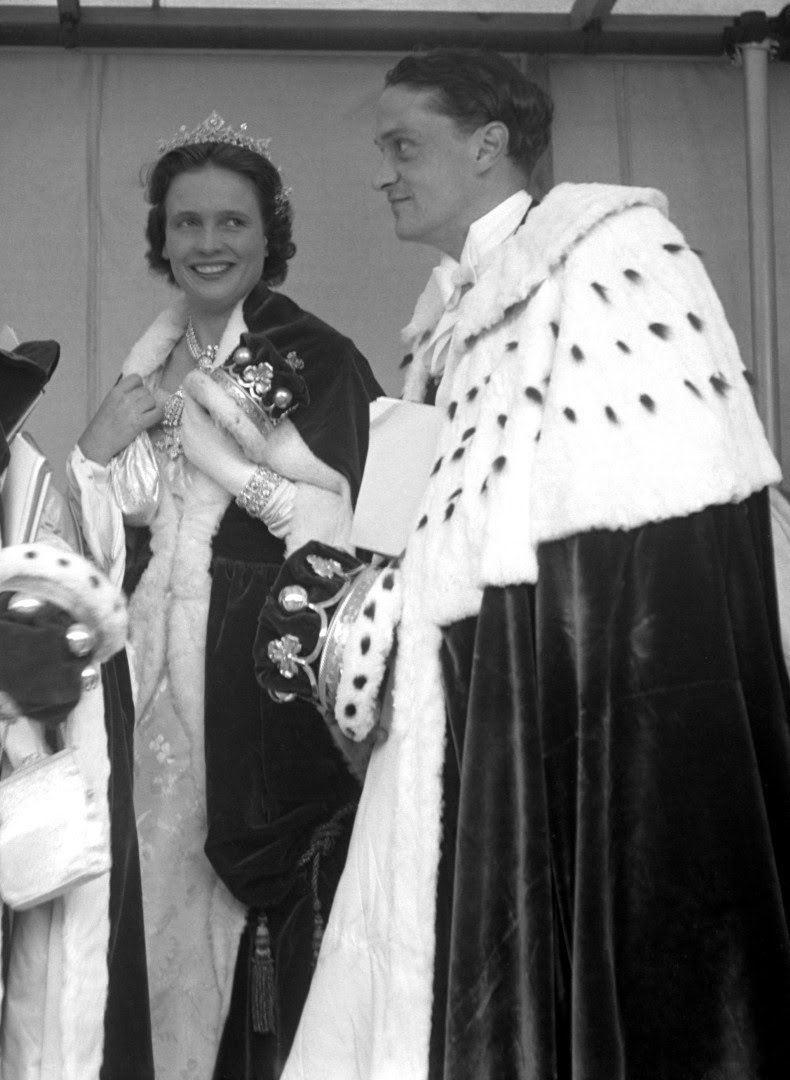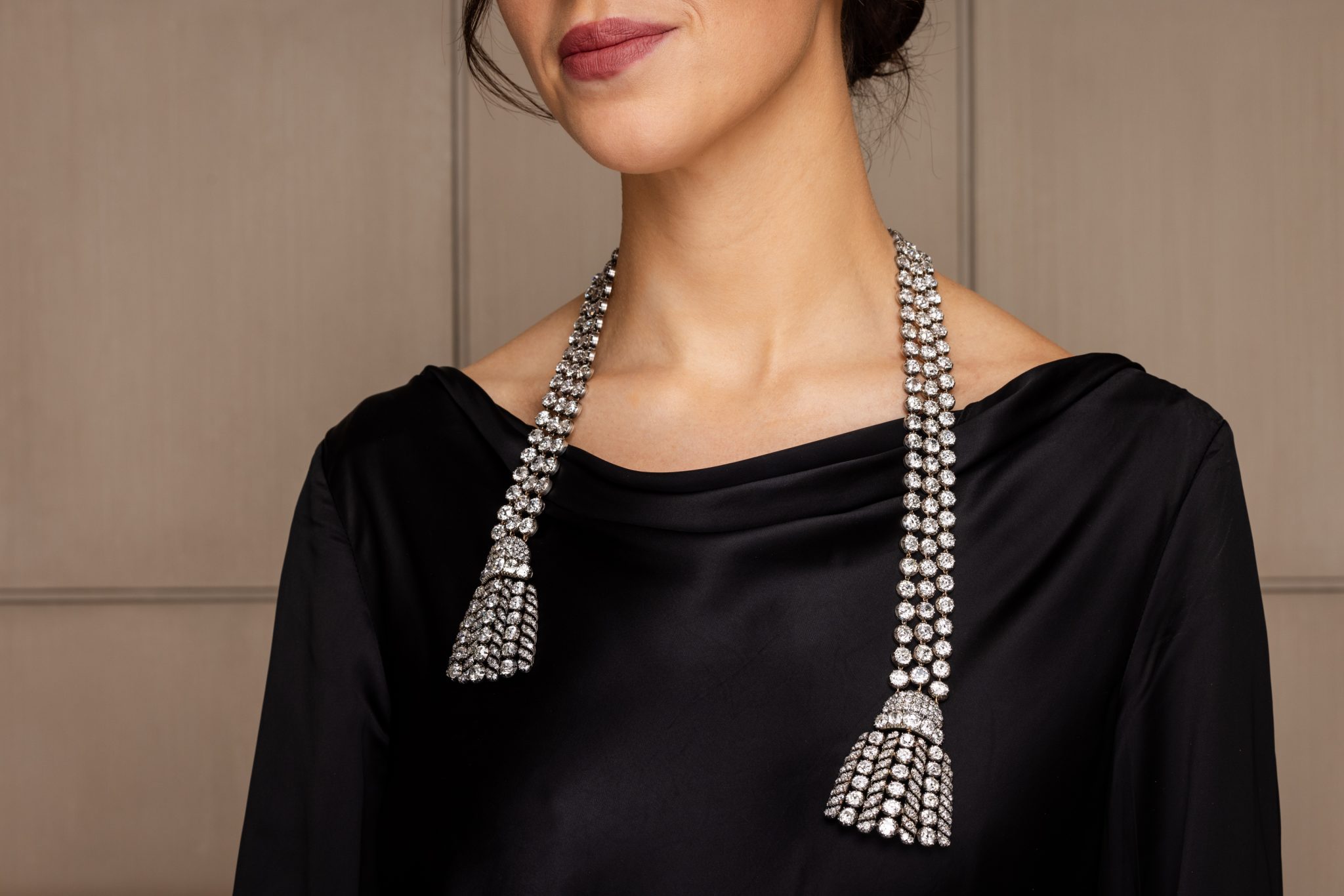
Sotheby’s batte all’asta un raro e storicamente importante gioiello del XVIII secolo
Alcuni dei suoi diamanti potrebbero essere legati allo scandalo dell’“Affare della Collana” che contribuì all’avvento della rivoluzione francese e alla morte di Maria Antonietta

Un gioiello georgiano, tra i più straordinari e intatti in mani private, masterclass in design, lavorazione e innovazione tecnica per l’epoca, nonché sorprendente per la quantità di diamanti (circa 300 carati). La stima oscilla tra 1.600.000 e 2.400.000 CHF / 1.800.000 – 2.800.00 dollari.
È parte di un’importante collezione privata asiatica e il suo debutto all’asta, alla Royal and Noble Sale di Sotheby’s l’11 novembre presso il Mandarin Oriental di Ginevra, è un evento unico, preceduto da un tour espositivo globale.
La sua origine non è documentata, ma un gioiello così importante non può che essere stato creato per i reali o per un aristocratico di alto rango delle corti dell’antico regime. I suoi diamanti sono tutti taglio brillante vecchia maniera, da uno a un carato e mezzo ciascuno, probabilmente estratti nelle miniere di Golconda, in India, famose perché i suoi diamanti furono i primi al mondo a essere scoperti nel IV secolo a.C. e, ancora oggi considerati i più puri e abbaglianti mai estratti.


gentile concessione di Alamy Images
Apparteneva al Marchesi di Anglesey, importante famiglia aristocratica anglo-gallese con stretti legami con la famiglia reale britannica all’inizio del XX secolo. Nel 1937, Marjorie Paget, Marchesa di Anglesey (figlia maggiore di Henry Manners, VIII Duca di Rutland) la indossò all’incoronazione di Re Giorgio VI, insieme al diadema di Anglesey (è stata immortalata per l’occasione dal fotografo Cecil Beaton). Nuovamente fu indossata nel 1953 dalla la nuora in occasione dell’incoronazione della Regina Elisabetta II. Il settimo Marchese di Anglesey si separò dall’opera intorno agli anni Sessanta. Nel 1976 fu esposto nella mostra del Bicentenario al Museo Americano di Storia Naturale, prima di essere acquistato da un importante collezionista asiatico, dove è rimasto da allora.

Tecnicamente straordinaria, è composta da tre file di diamanti (tra i quali probabilmente anche alcuni della famosa collana al centro dell’affare di Maria Antonietta) che terminano in una nappina a ciascuna estremità. Questo gioiello, detto anche “négligé”, può essere portato con le nappe pendenti o annodate al collo come tutti i gioielli di quest’epoca che si caratterizzavano per la loro opulenza e versatilità d’uso potendo essere indossati o cuciti per ornare un capo d’abbigliamento.
Prima della vendita sarà esposta nelle seguenti città:
Londra 23-25 settembre presso Sotheby’s New Bond Street
Hong Kong 3-5 ottobre presso la Maison di Sotheby’s
New York 9-10 ottobre presso Sotheby’s in York Avenue
Singapore 18-19 ottobre presso il Conrad Singapore Orchard Hotel
Taipei 21-22 ottobre presso il Centro Congressi Internazionale Hua Nan Bank
Dubai 28-30 ottobre presso Sotheby’s Dubai
Sotheby’s auctions a rare and historically important 18th century jewel
Some of its diamonds may be linked to the “Affair of the Necklace” scandal that contributed to the advent of the French Revolution and the death of Marie Antoinette
A Georgian jewel, among the most extraordinary and intact in private hands, masterclass in design, workmanship and technical innovation for the time, as well as astonishing in the amount of diamonds (about 300 carats)
The estimate ranges between 1,600,000 and 2,400,000 CHF / $1,800,000 – $2,800,00.
It is part of a major private Asian collection and its auction debut, at Sotheby’s Royal and Noble Sale on November 11 at the Mandarin Oriental in Geneva, is a unique event preceded by a global exhibition tour.
Its origin is not documented, but such an important piece of jewelry can only have been created for royalty or a high-ranking aristocrat from the courts of the ancien regime. Its diamonds are all old-fashioned brilliant cut, from one to one and a half carats each, probably mined in the mines of Golconda, India, famous because its diamonds were the first in the world to be discovered in the fourth century B.C. and, to this day considered the purest and most dazzling ever mined.
It belonged to the Marquesses of Anglesey, an important Anglo-Wales aristocratic family with close ties to the British royal family in the early 20th century. In 1937, Marjorie Paget, Marquess of Anglesey (eldest daughter of Henry Manners, 8th Duke of Rutland) wore it at the coronation of King George VI, along with the Anglesey tiara (she was immortalized for the occasion by photographer Cecil Beaton). Again it was worn in 1953 by her daughter-in-law at the coronation of Queen Elizabeth II. The seventh Marquess of Anglesey parted with the work around the 1960s. In 1976 it was displayed in the Bicentennial exhibition at the American Museum of Natural History before being purchased by a major Asian collector, where it has remained ever since.
Technically extraordinary, it is composed of three rows of diamonds ending in a tassel at each end. This jewelry, also called “négligé,” can be worn with the tassels dangling or knotted around the neck like all the jewelry of this era that was characterized by its opulence and versatility of use as it could be worn or sewn to adorn a garment.
Before the sale it will be exhibited in the following cities:
London Sept. 23-25 at Sotheby’s New Bond Street
Hong Kong Oct. 3-5 at Sotheby’s Maison
New York October 9-10 at Sotheby’s on York Avenue
Singapore October 18-19 at the Conrad Singapore Orchard Hotel
Taipei Oct. 21-22 at the Hua Nan Bank International Convention Center
Dubai Oct. 28-30 at Sotheby’s Dubai

POST COMMENT
Devi essere connesso per inviare un commento.